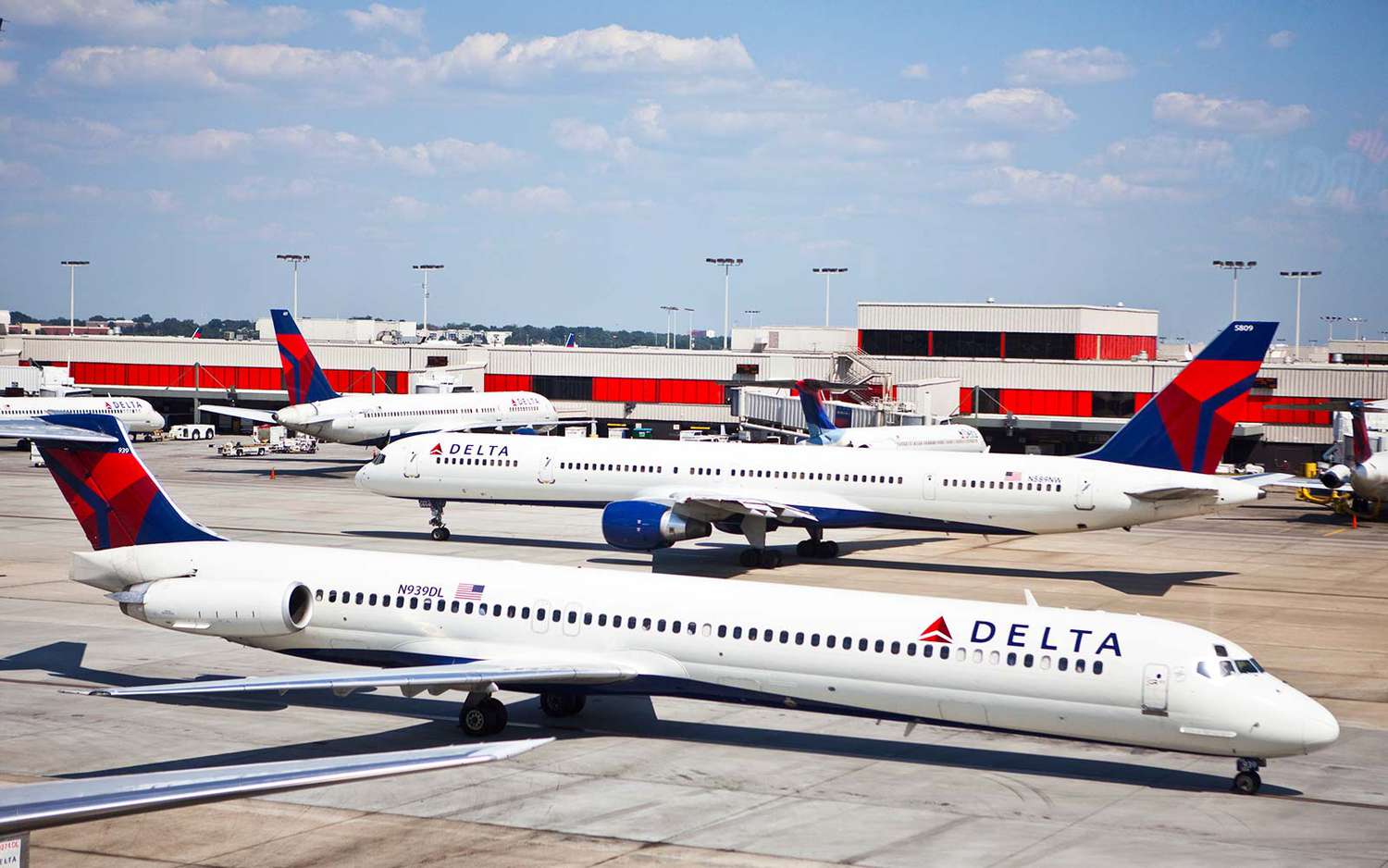If you’re looking to fly Delta Airlines, you’ll likely be routed through one of their major hub airports in the United States.
Delta has established hub airports in strategic locations around the country, allowing them to maximize the connectivity of their route network.
If you’re short on time, here’s a quick answer to your question: Delta’s largest hubs in the USA are Atlanta, Detroit, Minneapolis/St. Paul, New York-LaGuardia, New York-JFK, Salt Lake City, and Seattle-Tacoma.
In this comprehensive guide, we’ll take a closer look at each of Delta’s domestic hubs.
We’ll explore the history of how Delta established each airport as a hub, look at statistics on total passenger traffic, number of gates, and routes served from each hub, and discuss some of the amenities and services that make each hub airport unique.
Overview of Delta’s Hub Strategy
Delta Air Lines, one of the largest airlines in the United States, has a well-established hub-and-spoke model that allows for efficient travel connections across the country. T
his strategic approach involves concentrating operations at specific airports known as hubs, from which flights radiate to numerous destinations.
Delta currently operates several major hubs in the United States, each serving as a central hub for connecting flights.
Benefits of Hub-and-Spoke Model
The hub-and-spoke model offers several benefits for both the airline and passengers. Firstly, it allows for increased connectivity, as passengers can easily transfer between flights at the hub airports to reach their final destinations.
This model also facilitates efficient scheduling and aircraft utilization, enabling Delta to offer a wide range of flight options to travelers.
Additionally, the hub-and-spoke system enables the airline to optimize its resources, including crew and maintenance facilities, resulting in improved operational efficiency and cost-effectiveness.
By concentrating resources and flight operations at specific airports, Delta can provide more frequent and direct flights to a larger number of destinations.
This enhances convenience for passengers, as they have more options when planning their travel itineraries.
Moreover, the hub-and-spoke model enables Delta to offer competitive fares and maintain a strong market presence in key cities.
How Delta Chooses Hub Airports
When selecting hub airports, Delta takes into consideration various factors such as geographic location, passenger demand, and existing infrastructure.
The airline aims to establish hubs in cities that are strategically positioned to serve as major transportation centers.
These cities typically have a large population base, significant business activity, and strong tourism potential.
Delta also considers the availability of airport facilities and the potential for expansion.
It is important for the hub airports to have sufficient runway capacity, terminal space, and supporting infrastructure to accommodate Delta’s operations.
Additionally, the airline evaluates the existing competition and market conditions in each potential hub location to ensure that it can achieve a competitive advantage.
Delta’s Largest Hub: Hartsfield-Jackson Atlanta International Airport
History and Background
Hartsfield-Jackson Atlanta International Airport, located in Atlanta, Georgia, is not only the busiest airport in the United States but also serves as Delta Airline’s largest hub.
The airport has a rich history, dating back to its opening in 1926 as Candler Field.
Over the years, it has undergone several expansions and renovations to accommodate the growing number of passengers.
Delta Air Lines established its presence at Hartsfield-Jackson Atlanta International Airport in the 1940s and has since become the dominant carrier at the airport.
The airline offers a wide range of domestic and international flights from Atlanta, connecting millions of passengers to destinations around the world.
Statistics and Facts
The numbers associated with Hartsfield-Jackson Atlanta International Airport are truly staggering. In 2019, the airport served over 110 million passengers, making it the busiest airport in the world.
Delta Air Lines alone operates over 1,000 daily flights from Atlanta, serving more than 200 destinations worldwide.
With such a large volume of passengers, the airport boasts an extensive infrastructure, including two parallel runways, seven parallel taxiways, and five parallel cargo areas.
The airport’s terminals are equipped with state-of-the-art facilities and amenities to enhance the passenger experience.
Amenities and Services
Passengers traveling through Hartsfield-Jackson Atlanta International Airport can expect a wide range of amenities and services.
The airport offers numerous dining options, from fast food chains to upscale restaurants, catering to all tastes and preferences.
Additionally, there are plenty of shopping opportunities, including duty-free shops, boutiques, and convenience stores.
For those looking to relax or catch up on work, the airport provides business centers, lounges, and free Wi-Fi throughout the terminals. Travelers with children can take advantage of play areas and family-friendly facilities.
Additionally, the airport offers a variety of transportation options, including rental cars, taxis, shuttles, and public transportation.

Other Major Delta Hubs in the US
Detroit Metropolitan Wayne County Airport
One of Delta Airline’s major hubs is the Detroit Metropolitan Wayne County Airport. Located in Romulus, Michigan, this airport serves as a key hub for Delta’s operations in the Midwest.
With over 1,100 flights per day, it is one of the busiest airports in the United States. Passengers traveling through Detroit can enjoy a wide range of amenities, including shopping, dining, and lounges.
Minneapolis-Saint Paul International Airport
Another major Delta hub is the Minneapolis-Saint Paul International Airport, located in Minnesota.
This airport serves as a connecting point for passengers traveling to and from the Midwest and has been recognized as one of the best airports in North America.
With state-of-the-art facilities and a wide range of dining options, travelers passing through Minneapolis can enjoy a seamless and comfortable travel experience.
New York-LaGuardia Airport
New York-LaGuardia Airport is another major hub for Delta Air Lines. Situated in Queens, New York, it serves as a gateway to the bustling city.
With its convenient location and a wide range of domestic and international flights, LaGuardia Airport offers travelers easy access to New York City and the surrounding areas.
Passengers can find a variety of amenities, including shops, restaurants, and lounges.
New York John F. Kennedy International Airport
In addition to LaGuardia Airport, Delta Air Lines also operates a major hub at New York John F. Kennedy International Airport.
Located in Queens, JFK is one of the busiest airports in the United States and serves as a hub for both domestic and international flights.
Passengers traveling through JFK can take advantage of the airport’s numerous amenities, including shopping, dining, and lounges.
Salt Lake City International Airport
Salt Lake City International Airport is another major hub for Delta Air Lines. Situated in Utah, it serves as a key connecting point for passengers traveling to and from the western United States.
With its modern facilities and efficient operations, Salt Lake City Airport offers travelers a pleasant travel experience.
Passengers can find a variety of amenities, including shops, restaurants, and lounges.
For more information about Salt Lake City International Airport, you can visit their official website here.
Seattle-Tacoma International Airport
Finally, the Seattle-Tacoma International Airport is one of Delta Air Lines’ major hubs in the United States. Located in Washington state, this airport serves as a gateway to the Pacific Northwest.
With its modern facilities and excellent connectivity, Seattle-Tacoma Airport offers travelers a seamless travel experience.
Passengers can enjoy a range of amenities, including shopping, dining, and lounges.
For more information about Seattle-Tacoma International Airport, you can visit their official website here.
Conclusion
Delta’s hub airports play a pivotal role in their domestic and international route network.
By funneling passengers through these strategically located hubs, Delta can connect customers efficiently between hundreds of destinations.
Understanding Delta’s major hubs in the US can help you plan your next trip and know what to expect during your travels.
With extensive operations, top-notch facilities, and excellent service, Delta’s hub airports offer smooth connections and premium experiences.






